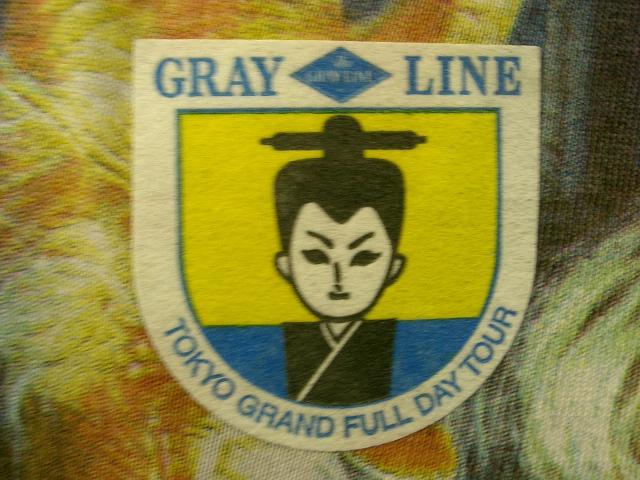
The bus picked us up from the hotel at 7:40am so yawning, but cameras at the ready, we set off.
[ Top | Sun | Mon | Tue | Wed | Thr | Fri | Sat ]
Grey Line Tours
There are a certain number of tourist traps in Tokyo, and we thought
we'd get them all out of the way in a single day and them come back
later to any which actually seemed worth spending significant time
at. Cunning plan, huh? So we picked the professional company
that promised to cram the most into one day:
Japanese Grey Line's Grand Full Day Tour.

The bus picked us up from the hotel at 7:40am so yawning, but cameras
at the ready, we set off.
Tokyo Tower
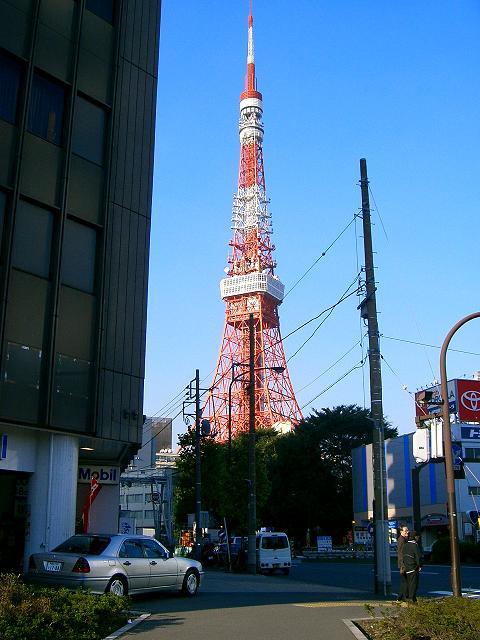
The
Tokyo Tower
is a red and white copy of the Eiffel tower. It features
in a number of anime as being a recognisable Tokyo location but, despite
being surrounded by tour parties of children from private schools, we
entirely failed to be attacked by aliens, transported to other dimensions,
or have anything else interesting happen to us. Good view, though.
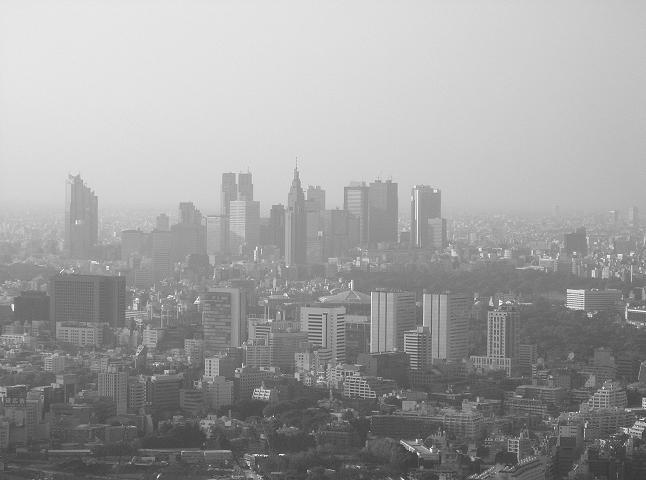


Meiji Shrine
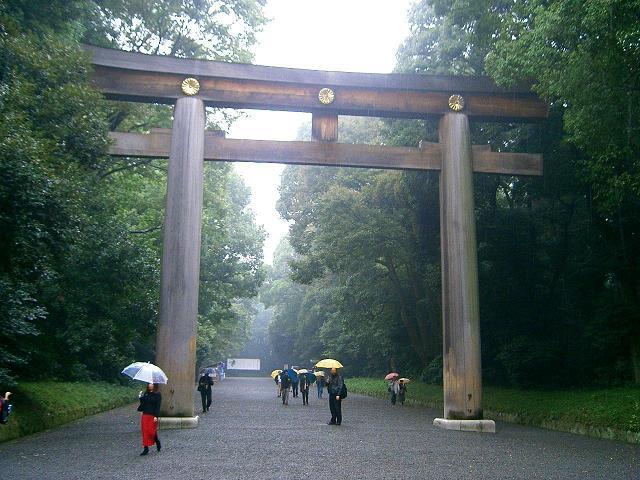
The Emperor Meiji was quite a character. He became Emperor at the age of
16, at a time when Shoguns ruled Japan. Yet, during his life he manged to:
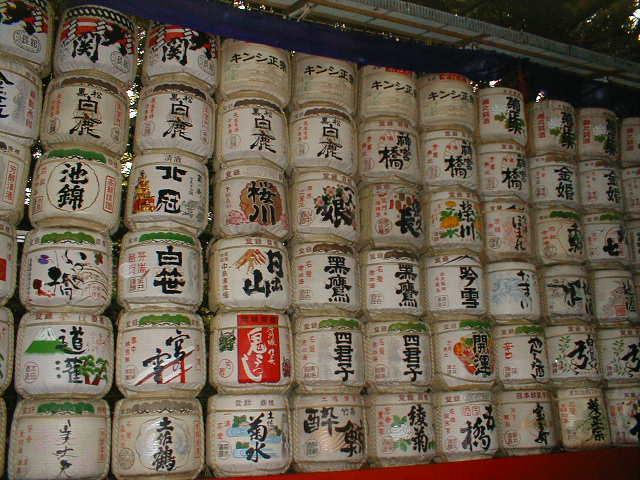
The
Meiji Shrine
is an enormous area containing a Shinto shrine dedicated to
his 'hero spirit'. It is as much of political significance
as religious, with companies and other power factions reaffirming their
aliegance to his policies of openness by making large public donations
to the shrine for various festivals. One symptom of this is the wall of
stacked Saki Rice Wine crates, each emplazoned with the logo of the company
who donated it. Unsurprisingly, the Meiji shrine is a very popular place
to go during festivals. During one annual festival that lasts three days,
they have over 4 million people pass through the shrine. Since everyone
entering a shrine must wash their hands at the outdoor wash station first,
this must be an immense logistic problem. The power of Saki, I guess.
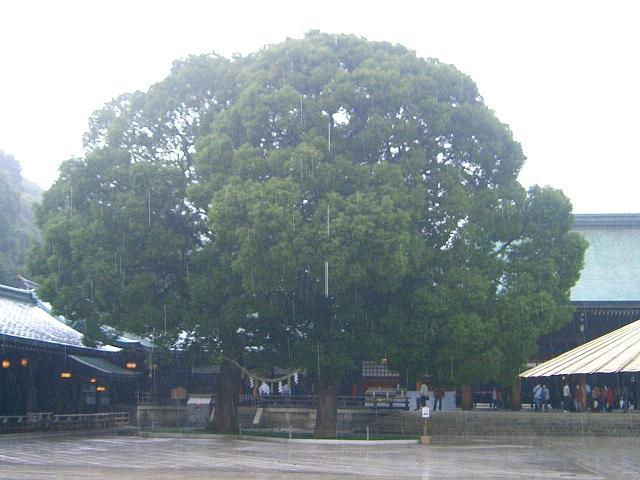
It is also a very popular place to get married. There are two trees in
the courtyard that symbolise the masculine and feminine spirits. They
are joined by a spell woven rope.
The shrine has a full
staff of highly costumed priests (think beefeaters at the tower of London).
We were informed by the tour guide that they correct way to show respect
at the shrine was to clap hands twice, bow twice then clap hands once.
When we went round the staff were busy setting up stalls showing presents
donated for an upcoming feast and manning shops selling charms for every
occasion imaginable (including some very specific medical ones). I bought
a small wooden shrine guaranteed to produce academic success.
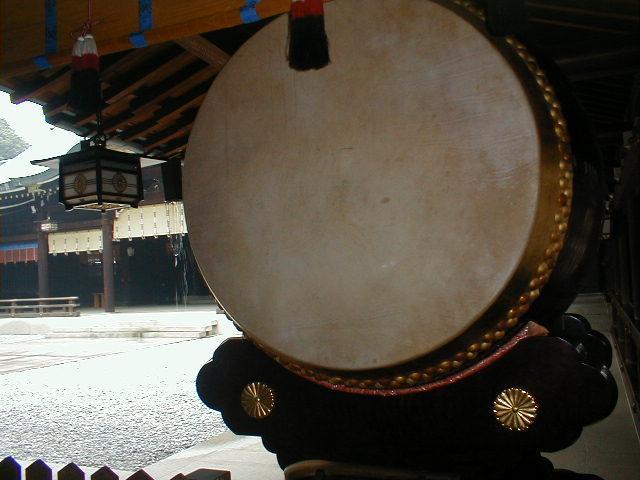
Earnest sincerity is highly prized by the Japanese.
And they want to build a
pyramid in Tokyo bay. A big pyramid. 55 times larger than the Great
Pyramid in Egypt. That's large enough for most of Tokyo to shelter behind
it for protection against tsunami waves.
We wandered around the Akasaka district looking for the "pretty ironwork"
he'd mentioned, and eventually ventured up an elevator in what looked like
a private block of flats to
Supul
(see map) where we
had the best meal of the trip. You may wish to skip the next paragraph.
Fully sated we wanders back to the hotel via a pachinko parlour. There
are only certain forms of gambling allowed in Japan. Pachinko, a cross
between pinball and slot machines, played using ball bearings, is one
of these. Noting the absolutely mesmerised stares of the players we
decided to forgo playing a game outselves.
Akasaka Guest House
Not much to see. A palace where the government hosts visiting dignitaries.
National Diet Building

Their houses of parliament. One got the impression that very little of
the
politics
and decision making of the country gets carried out by the
visable politicians, but that could be unfair. The Japanese have a
reputation for placing high value upon building consensuses, but we didn't
see much evidence one way or the other during our stay, unless you count
the importance placed upon politeness as a symptom.
Imperial Palace East Garden

A very impressive fortress surrounds the Imperial Palace and gardens.
One can't enter the palace itself, but one can go past the moat, rampart,
stone walls, murder holes, killing grounds, special forces training dojo
and thick thick iron gates to see the gardens. Built primarily it seems
to keep the Shogun's heir somewhere safe but not in a position to attack
the Shogun, the gardens contain lots of Koi ponds and flower beds that
only bloom in the spring. I suspect heirs must have a fairly dismal
time living there.
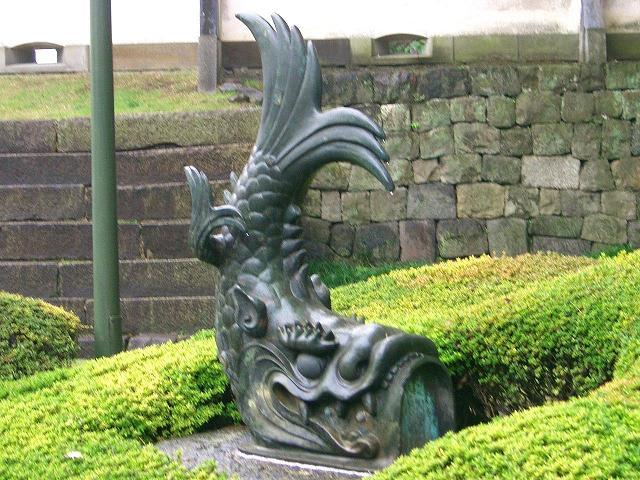
One statue there worth mentioning: the fish. Back when Tokyo was called
Edo, this had been errected as a blessing against fires. When, a few
years, later the entire place burned down and was rebuilt, they sensibly
decided to augument this protection with a fire brigade.
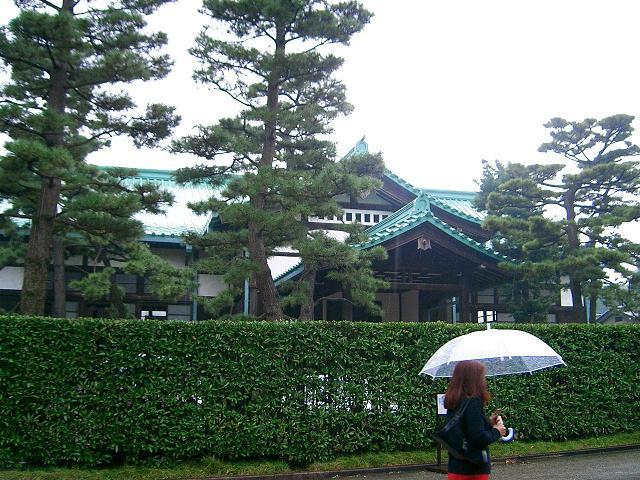
Ginza Shopping District
Tokyo's Oxford Street.
Kushiage Lunch
Louise opted to skip this in favour of sleep, leaving me to learn about
the intracies of how to slurp your noodles (making a noise is the polite
thing to do, else the chef won't believe you are enjoying them).
Tasaki Pearl Gallery
This stop was unintentionally hilarious. We sat through a talk on how
pearls are cultivated, which was interesting. Then we got left in the
shop store for 20 minutes. We presumed this was so the tourists would
be tempted to buy pearls, possibly generating a nice income in kickbacks
for the tour company. However, instead of shopping, we found a copy of
Tasaki's annual corporate report. Let me quote you some bits:
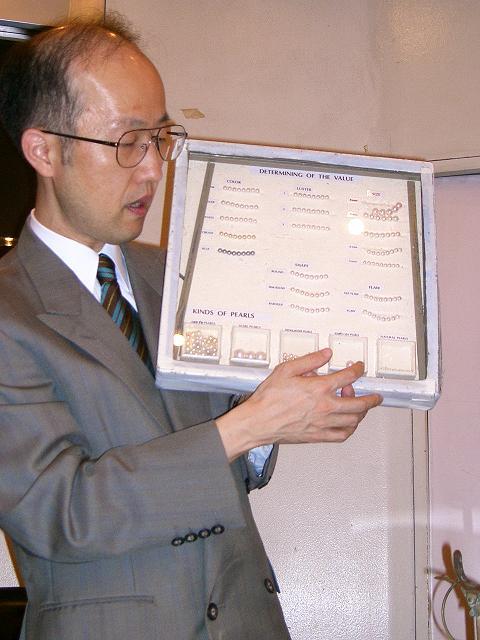
I have never heard of warriors wearing pearls into battle. A pearl
necklace symbolises the bonds that join the many peoples of the world
together. Making people sense the goodness of peace through pearls is
also one of my dreams.... Tasaki Shinju has no company motto. I often
say that not having a motto is our company motto.... to lovc pearls above
all else means to be aware that oysters are hard at work creating pearls
right now at the bottom of the sea.... If one or more oysters has become
encrusted with grime, I find myself saying, "You poor thing! I'll soon
get you nice and clean." Recently I've come to really understand what our
former chairman meant when he said we should talk to the oysters.
Sumida River Cruise

Going up the Sumida river in a boat is quite a good way of seeing some of
Tokyo's stranger architectural features. There's a beer company with a
headquarters designed to look like froth being blown from a glass. There
are boats that look like extras from a James Bond movie. And there are
TV studios covered with paintings of their most popular stars.
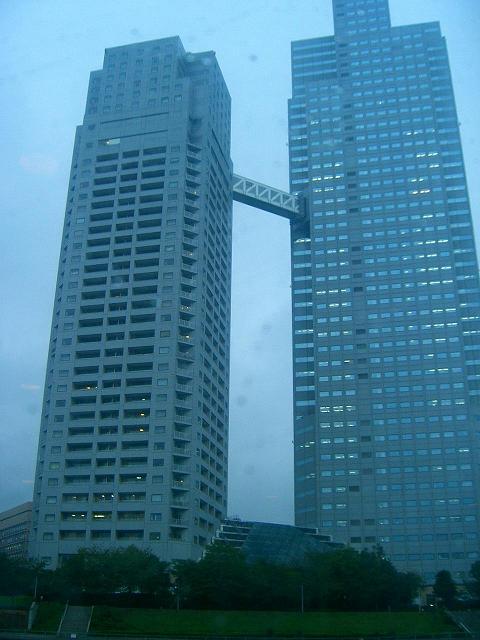
Something that greatly affects Tokyo, and to a lesser extent Japan as a whole
is population density. 120 million people live in Japan, but because a large
part of it is mountains, most of them are crammed into cities. 22 million
live in the 50 square km area of Tokyo and Yokohama alone. At the height
of the property boom, land just outside Tokyo main station was being sold
at a price of $200,000 per square meter. This affects many architectural
decisions, because designs that would be uneconomic elsewhere are just good
sense in Tokyo. Many shops are just a narrow doorway, leading to 5 floors
of shop. Anywhere near a main subway station has acres of undergroup shopping.
Asakusa Kannon Temple

The spiritual equavilent of Fort Knox. Instead of gold, their treasure
is a portion of the ashes created by the cremation of the last Buddha.
And instead of robbers, the beings they are trying to protect against
are evil spirits. There are enormous red paper lanterns. Wooden
statues of gods and demons. Incense burners. And my favourite precaution:
massive sandals hanging up by the entrance gate, to fool spirits into
thinking a scary giant lives there.
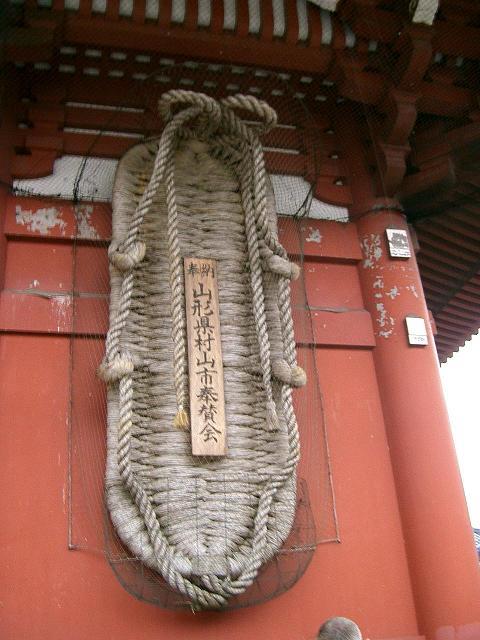
Nakamise Shopping Street
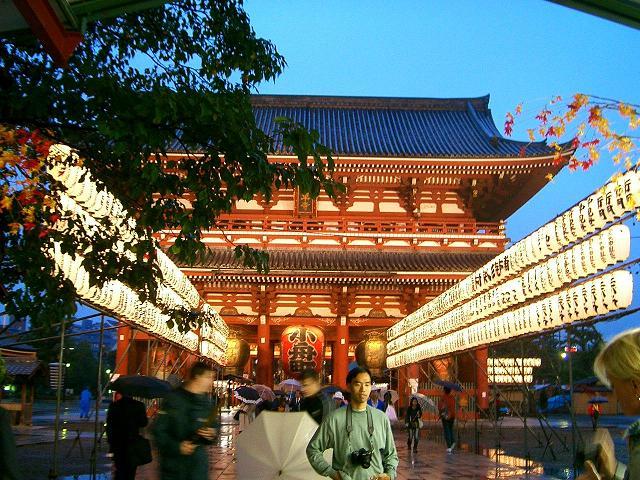
Ok, I admit it, we succumed. This is one of the greatest flea markets in the
world, with every glittery thing under the sun for sale. We ended up with
a pair of traditional kimonos. I think we are going to have to invite some
friends around for a Japanese meal, just so we get to wear them.
Kappa Bashi
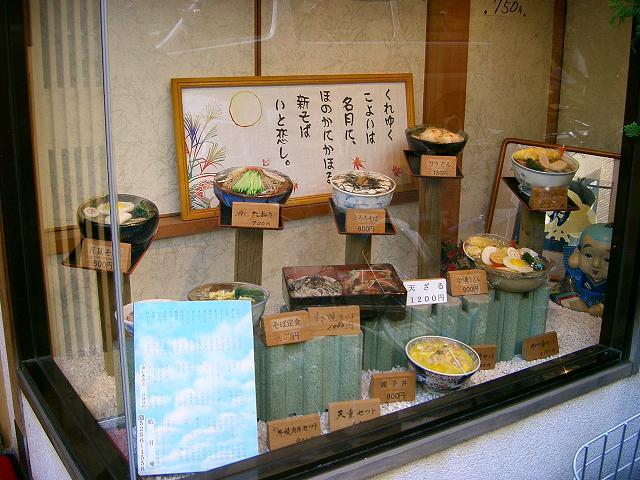
The Japanese have a very good system of doing cafe menus. Rather than
just listing the dishes served on a piece of paper outside the door, or
even supplying photographs, they fill the window with plastic models of
what each meal looks like. Creating these models is a specialised art,
so when someone in Japan opens a new cafe, they make a pilgrimage to the
Kappa Bashi - the catering goods area of Tokyo where all the shops selling
these models can be found.
Akasaka
The tour wound up after dark in the Akihabara district, where we spent
a short time looking at laptop computers and cameras. Laptop screens
are getting really good. However hunger dragged us away into the tube
system as we set off in search of a restraunt we'd been given vague
directions to by a companion on the tour.

They served beef. Very very thin slices of the tenderest possible beef,
marinaded in sesame and other concoctions. The table had a dip in the
center, into which they carefully poured red hot glowing iron ingots,
then covered it with a grid. We used tongs to take pieces of meat one at
a time and cooked them ourselves, about 20 seconds on each side, before
dunking them in a variety of sauces and eating them with a salten salad.

By the way, there is one field in which the Japanese are most definitely
the world leaders. Japanese Toilets - probably the most technically
advanced in the world. They have Blinkenlights. They are so wired up
you are sometimes afraid to use them in case you get electrocuted. Here
is the control panel from the one in the restaurant.
[ Top
| Sun
| Mon
| Tue
| Wed
| Thr
| Fri
| Sat
]